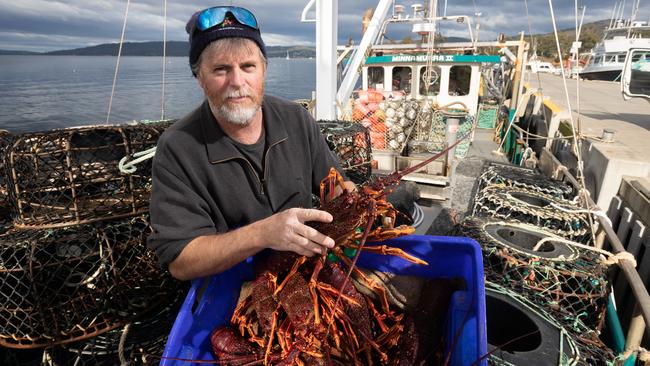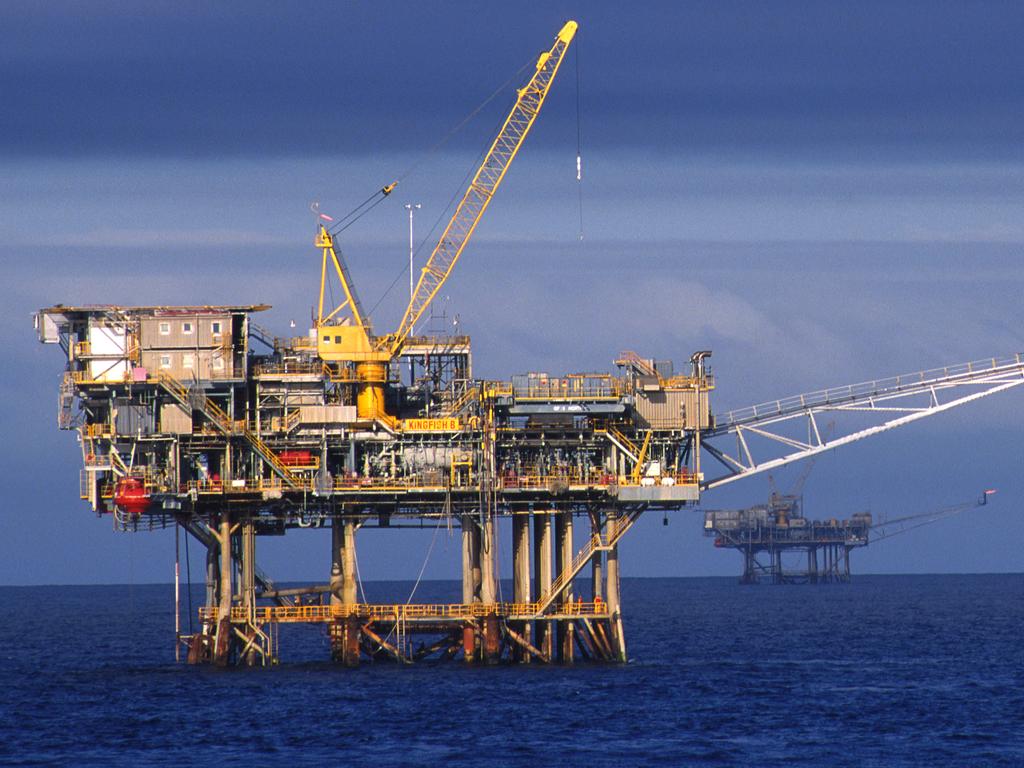Clash of industries making waves in Bass Strait
Two valuable industries are on a collision course over the riches of a vast area of Bass Strait, with high stakes for the nation regardless of which side prevails.

Two valuable industries are on a collision course over the riches of a vast area of Bass Strait, with high stakes for the nation regardless of which side prevails.
Two oil and gas companies plan to conduct seismic testing – blasting with powerful airguns – across a combined 7300sq km east and west of King Island, to aid the search for gas reserves.
Determined to stop them – at least until the implications on fish stocks are fully assessed – are high-value fisheries on both sides of the strait; scallop, rock lobster and giant crab.
Armed with scientific evidence and bitter past experience, all pointing to devastating impacts, fishermen fear the seismic tests, for 50 to 60 days next year, will wipe out resource for generations.
Energy companies ConocoPhillips and Beach Energy play down the impacts, talk up the need for new gas reserves and are consulting ahead of seeking regulatory approval.
Fishing groups, believing the regulatory process is stacked against them, are gearing up for a fight. “The consequences for us are dramatic and drastic if this goes all wrong,” said Julian Harrington, chief executive of the Tasmanian Seafood Industry Council.
Fishing industries believe the testing – involving powerful blasts of air shot from ships, creating acoustic wavelets – can kill or harm a variety of species.
Peer-reviewed science by the Hobart-based Institute for Marine and Antarctic Studies and Curtin University shows the seismic airguns used can damage the sensory organs and reflexes of rock lobster, kill scallops and wipe out zooplankton. There remains deep resentment among fishers over seismic testing near Flinders Island in 2010, which the industry blames for a loss of 24,000 tonnes of scallops worth $70m. “We still haven’t seen recruitment in that area since,” Mr Harrington said.

There was deep concern about the potential impact on rock lobster and giant crab stocks of Conoco-Phillips’ plans to seismically survey in a 4960sq km area to west of King Island.
To the east of King Island, similar fears were held for scallops stocks if Beach Energy won approval to conduct seismic surveys in a 2307sq km area.
Tasmanian Rock Lobster Fishermen’s Association president Clive Perryman called for a moratorium on seismic testing until baseline fish stock surveys were conducted and monitoring put in place.
“I’m third generation (fisherman) and I want to make sure there’s something for the next generation,” Mr Perryman said. “Our licences are quite valuable and there’s a lot of capital investment put into it. This could ruin our businesses.
“We took a 30 per cent cut in our quota six or seven years ago and are starting to reap the benefit. If someone comes along and knocks out our new (lobster) recruits, then all that’s done. It’s like sowing a paddock, then someone spraying half of it with roundup.”
The Bass Strait Scallop Industry Association also called for scallop surveys ahead of testing. “There is fishing going on in that area and it is very, very close to areas of high-density commercial fishing,” said association executive officer Andrew Sullivan.
The Tasmanian Liberal government backed the fishermen. “Seismic survey activity has the potential to impact valuable commercial fisheries, along with the ecologically important zooplankton community,” a spokeswoman said.
Beach Energy said it had been involved in “constructive discussions” with fishing industries and was “committed to an ongoing and transparent dialogue”.
“While our assessment of 10-year catch data has found the survey area equates to around 0.28 per cent of the total catch, we acknowledge the concerns of the industry and have acted to put in place adequate buffer zones,” a spokesman said. “We also acknowledge the industry’s calls for fish stock surveys, and will consider the merits of this request.”
ConocoPhillips said it was in the “early stages” of developing an environmental plan.
Seismic testing maps areas beneath the ocean floor by sending acoustic wavelets through the water and sea floor. These “echo” back to specialised microphones floating on long cables behind the ship.








To join the conversation, please log in. Don't have an account? Register
Join the conversation, you are commenting as Logout